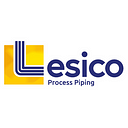Semiconductors play a vital role in powering our devices and driving innovation. Behind the scenes, a sophisticated manufacturing process takes place, involving numerous components and materials. One such critical element is semiconductor piping, which facilitates the flow of gases and liquids within semiconductor manufacturing equipment. In this blog post, we will delve into the world of semiconductor piping manufacturing materials, exploring their importance and characteristics.
Understanding Semiconductor Piping:
Semiconductor piping refers to the network of pipes, tubes, and fittings that enable the safe and efficient transport of gases and liquids throughout the fabrication process of semiconductors. These pipelines are crucial for delivering process chemicals, coolants, and other essential substances to various stages of semiconductor manufacturing, including deposition, etching, and cleaning.
Key Characteristics of Semiconductor Piping Materials:
Chemical Compatibility:
The materials used in semiconductor piping must exhibit excellent chemical resistance to withstand the harsh and corrosive nature of the process chemicals involved. They must be able to withstand exposure to acids, bases, solvents, and other aggressive substances without degradation or contamination.
High Purity:
Semiconductor manufacturing requires an extremely clean and pure environment to ensure the quality and reliability of the final product. Piping materials must have low levels of impurities, such as trace metals, particles, and organic compounds, to prevent contamination of the semiconductor materials and avoid adverse effects on device performance.
Low Particle Generation:
Particulate contamination can severely impact the yield and performance of semiconductor devices. Piping materials should have a smooth, non-reactive surface that minimizes the generation and shedding of particles. This helps maintain the cleanliness of the manufacturing environment and reduces the risk of defects in the fabricated semiconductors.
Temperature and Pressure Resistance:
Semiconductor fabrication processes often involve extreme temperatures and pressures. Piping materials must be capable of withstanding these conditions without compromising their structural integrity. They should exhibit high-temperature resistance to prevent deformation or degradation and possess sufficient pressure resistance to avoid leaks or bursts.
Commonly Used Semiconductor Piping Materials:
Fluoropolymers:
Materials such as perfluoroalkoxy (PFA) and fluorinated ethylene propylene (FEP) are widely used in semiconductor piping due to their excellent chemical resistance, high purity, and low particle generation. These fluoropolymers offer superior performance in harsh chemical environments and are well-suited for critical applications.
Stainless Steel:
Stainless steel piping is favoured for its durability, high-temperature resistance, and good mechanical strength. It is commonly used in gas distribution systems and for high-pressure applications. Stainless steel offers good chemical resistance to various process chemicals and is relatively easy to clean and maintain.
Polyvinyl Chloride (PVC):
PVC piping is employed in less critical areas of semiconductor manufacturing, where stringent purity requirements may not be necessary. It is cost-effective, easy to install, and exhibits good resistance to a wide range of chemicals. However, PVC is not suitable for high-temperature or high-pressure applications.
High-Density Polyethylene (HDPE):
HDPE piping is often used for ultrapure water systems and other non-critical applications within semiconductor manufacturing. It offers good chemical resistance, low particle generation, and is relatively inexpensive compared to other materials.
Conclusion:
Semiconductor piping is a crucial component of the complex manufacturing processes involved in semiconductor fabrication. The selection of appropriate semiconductor piping manufacture materials is vital to ensure the integrity, purity, and efficiency of these processes. By considering factors such as chemical compatibility, high purity, low particle generation, and temperature/pressure resistance, manufacturers can choose materials like fluoropolymers, stainless steel, PVC, or HDPE that meet the specific requirements of their semiconductor fabrication operations.
